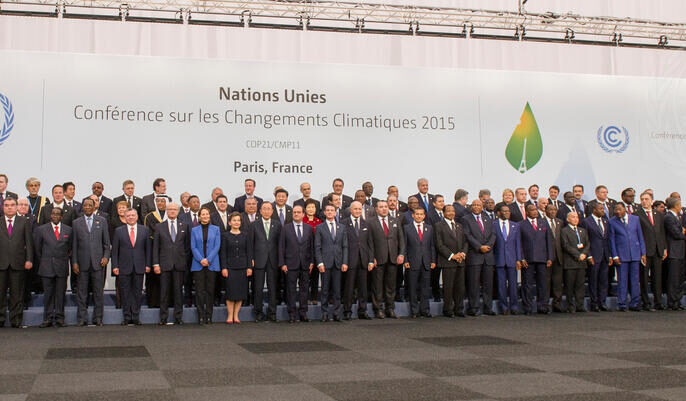How to Win at Travel Marketing in the Age of Google and Expedia
Skift Take
This sponsored content was created in collaboration with a Skift partner.
For travel brands looking to better engage their customers and earn more revenue in 2019, the industry marketing landscape can often feel like an unfair fight. That’s because industry behemoths like Google, Booking Holdings, and Expedia tend to monopolize the customer conversation with their huge marketing budgets and extensive data on customer habits.
This bears out in industry performance. A June 2018 report by Skift Research found that Booking Holdings spent more than $4.5 billion on advertising over the previous 12 months, while Expedia spent more than $3.3 billion, making it difficult for any other travel brand to compete for share of voice based on dollar spending alone. The same is true when it comes to travelers’ preferred trip planning resources. Additional 2018 data from Skift Research found that two of the top three sources consumers use to plan their trips were either travel review websites (like TripAdvisor) or search engine results (primarily on Google). This too makes travel marketers’ jobs more difficult, crowding out their attempts to build strong relationships with current and past customers as they research and purchase travel products.
How can an independent travel brand expect to grow its relationship with customers in this environment? More importantly, how can it accomplish this while accounting for the increasing complexity of today’s marketing strategies? The answer is to outsmart the Bookings and Expedias of the industry by getting more intelligent about customer data they own, using it in new ways to improve the marketing experience and provide more personalized, relevant, and timely content to buyers. Thanks to the emergence of deep learning technology provided by companies like Tinyclues, this approach is now within reach.
“Deep learning is the most advanced and powerful AI technology and can now be used on top of marketing databases to identify hidden connections and patterns. This unlocks powerful new information into who is likely to buy and when and what they will purchase –– allowing for brands to make action-oriented decisions,” explained David Bessis, founder and CEO of Tinyclues. This can help them build relevant messages, engaging past customers like never before, while also helping to build more loyal, repeat business. And unlike traditional machine learning and basic artificial intelligence-based technologies, deep learning is able to seamlessly handle the full range of a brand’s customer data, automatically identifying future buyers and taking campaign performance and customer experience to the next level.
What does this new strategy look like in practice? Below we examine two examples of how Air France and Club Med’s marketers have used this deep learning-based marketing solution technology to improve their own campaign efforts, making it easier to “fight back” against the travel’s market giants like Google, Booking Holdings, and Expedia.
Air France: Increasing Booking Revenue and Improving Message Relevance
For a global aviation brand like Air France, marketing is a challenging endeavor. The well-known carrier is constantly promoting an intricate and ever-changing collection of airline routes, destinations, brands, and product offerings to its customers.
On top of all this, Air France needs to ensure it can achieve these goals while satisfying the marketing demands of various internal teams and brand managers. It also needs to complete the whole process in a fashion that ensures its messages remain relevant and timely. In order to achieve this, Air France must also lean on its extensive customer database to better optimize its marketing efforts, personalize them on an individual customer level, and ensure the relevant marketing messages are deployed in market in a quick and timely fashion.
But as the importance and amount of customer data increases, it’s getting harder to complete this process by manual efforts alone. That’s why Air France partnered with Tinyclues to deploy a deep learning-based solution to aid its marketing efforts. The company’s solution helped the carrier identify future buyers for each destination and booking window within its existing customer database. Air France’s executives were able to improve customer targeting, prevent audiences from oversaturation and irrelevant messages, and deploy new campaigns to market faster.
For example, Air France put this capability to use in a recent program to boost purchases of its flight route to Shanghai. The carrier was looking to reach travelers who would book a flight to the Chinese city during a very specific, limited time window. In the past, it was difficult to target this type of traveler using traditional marketing as it required a sophisticated understanding of customer intent and booking habits. But the deep learning technology allowed Air France to quickly identify the future buyers and then deploy a campaign to reach this niche audience, resulting in a significant boost in conversions and a 17 percent increase in its Shanghai route booking rate. “Without Tinyclues, we would have missed out on more than 50 percent of our campaign revenue,” said Julien Lechat, director, e-acquisitions, at Air France. “The solution allowed us to send highly relevant messages and thus increase our conversion rate by 82 percent.”
Club Med: Optimizing Marketing Spend and Customer Experience
Much like Air France, the all-inclusive holiday brand Club Med faces a similar set of marketing challenges. As a premium travel provider vying for customers in a highly competitive market, it must constantly find ways to be relevant and timely with its marketing campaigns. At the same time, these messages also need to avoid reaching a saturation point where customers tune out. Additionally, Club Med needs to make decisions about which channels –– be it email, direct mail, or outbound calls –– will be most effective given its marketing budget.
To tackle some of these challenges, Club Med turned to a deep learning solution to help it rethink its marketing approach. Among the objectives the company outlined were an increased rate of “repurchase” among previous Club Med buyers, growth in campaign revenue, and an optimization of campaign planning to help maximize the company’s limited resources.
Using Tinyclues, Club Med realized a number of benefits. Most importantly, its embrace of deep learning for marketing campaigns allowed it to better create hugely relevant promotions for the brand’s wide-ranging selection of products (ski vacations, beach trips, honeymoons, events, etc), matching them with the future buyers at the right booking window. Whereas in the past many marketing campaigns had been “mass market” (all products sent to all potential customers) –– which meant a lot of time and money –– the pattern-identification abilities of deep learning helped Club Med forecast audience size for each of its destinations and products for different destinations, seasonality, and resort types, allowing for further offer personalization and relevancy of campaign offers.
This improved relevance and efficiency showed up in the company’s results. Club Med saw better performance of its email campaigns: Campaigns targeted with deep learning technology saw a 45 percent increase in average purchase amount and an 88 percent increase in revenue generated per email sent. The company saw similar lifts in its direct mail and outbound call efforts as well. And deep learning not only allows Club Med to easily find early or late bookers, but it also optimizes the campaign plan to lessen marketing fatigue.
Conclusion
The travel industry’s distribution and marketing landscape is more complex (and more challenging) than ever before. As the industry continues to consolidate, a few large players have come to dominate distribution, marketing, and trip planning, making it harder than ever for travel suppliers to engage their customers and strike up a meaningful dialogue. But thanks to the power of deep learning, the industry’s largest players no longer get to dominate the conversation. Instead, travel marketers can use this revolutionary approach to unleash the potential of their first-party data to optimize and evolve their marketing approach, creating more timely, relevant, and personalized marketing messages.




